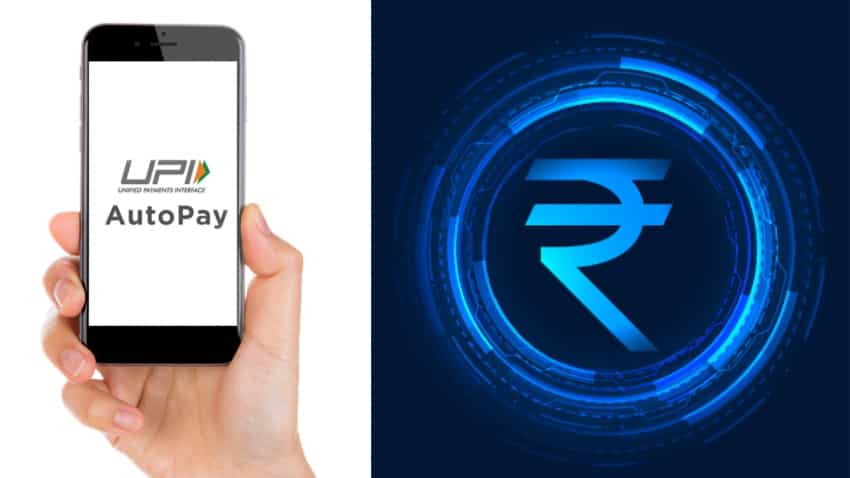Central Bank Digital Currency launch: 5 key differences between UPI and e-Rupi - Explained
Experts pointed out that to carry out payments through UPI, individuals need to have a bank account and often a functioning debit card, but so is not the case for e-rupi.

The Reserve Bank of India (RBI) launched its pilot project on central bank digital currency or e-Rupi on December 1. While the pilot project will be carried out in four cities of Mumbai, New Delhi, Bengaluru, and Bhubaneswar, soon it is likely to be available of residents across India. But what is exactly the difference between UPI and e-Rupi?
Here are the five major differences between UPI and e-Rupi/CBDC
1. No need to have a bank account
Experts pointed out that to carry out payments through UPI, individuals need to have a bank account and often a functioning debit card, but for accessing the e-Rupi wallet, there will be no need to have such a bank account. “With a retail CBDC, people should be able to transact without any bank involved (like physical cash) and it's a digital transfer from people to people direct minus a bank intermediary. It will have the same denominations as physical cash,” said Vishwas Patel, Executive Director, Infibeam Avenues Ltd, which owns CCAvenue, a payment gateway brand.
2. Anonymity can be maintained
Transactions in digital rupee may offer the same anonymity as cash transactions. The Reserve Bank has asked lenders not to report low-value transactions made through the digital rupee. Once the Central Bank Backed Digital Currency Retail is transferred to customer wallets, banks will not track or report these transactions, bankers said. Currently, most cash transactions over Rs 50,000 require customers to disclose their permanent account number. While no limit has been set for digital rupee transactions, it is believed that retail transactions up to Rs 50,000 will not be reported. Transactions in excess of Rs 2 lakh will have to be reported for tax purposes. Experts suggest that the move will ensure the virtual currency will offer a similar degree of anonymity associated with paper money for business exchanges below a value threshold.
3. No need for physical currency backup
UPI transactions are backed by physical currency. This means the payment will not go through if the user’s bank account does not have enough funds. The e-rupee, however, can be used for digital payments in lieu of currency/cash. “The e-rupi is issued by RBI and is a legal tender in itself. It need not necessarily be backed by physical currency. The UPI transactions, on the other hand, are completely backed by a physical currency,” added Sudhir Pai, Executive Vice President and Chief Technology & Innovation Officer (CTIO), at Financial Services, Capgemini.
4. Single handle for all
Depending upon the banks and platforms, the UPI handle or ID varies. Even linking two different platforms with the same bank account may generate different UPI ID, but such will not be the case for e-Rupi. “The digital rupee will be operated by RBI and not by bank intermediaries in the case of UPI where each bank has a different UPI handler,” added Kunal Chowdhry, CEO, Apollo Singapore Investments. E-rupi will have a single public key (address).
5. Transaction without a smartphone
Experts believe that another major benefit of using the e-rupee is that it will allow offline transactions which can be carried out on feature phones, promoting its adoption in rural and remote areas as well. Since the e-rupee voucher will be shared with the beneficiary through an SMS or QR code. This will enable its use in rural and remote areas as well where internet connectivity can be a problem. And if it's in the form of an SMS, anyone without a smartphone can utilize it as well.
Get Latest Business News, Stock Market Updates and Videos; Check your tax outgo through Income Tax Calculator and save money through our Personal Finance coverage. Check Business Breaking News Live on Zee Business Twitter and Facebook. Subscribe on YouTube.
RECOMMENDED STORIES

Top 7 Flexi Cap Mutual Funds With up to 52% SIP Return in 1 Year: Rs 20,000 monthly SIP investment in No. 1 fund has generated Rs 3.02 lakh; know about others too

Rs 55 lakh Home Loan vs Rs 55 lakh SIP investment: Which can be faster route to arrange money for Rs 61 lakh home? Know here

Sukanya Samriddhi Yojana vs PPF: Rs 1 lakh/year investment for 15 years; which can create larger corpus on maturity?

Power of Compounding: How soon will monthly SIP of Rs 8,000, Rs 12,000, and Rs 15,000 reach Rs 6 crore corpus target?

Top 7 Gold ETFs With Best Returns in 3 Years: No.1 ETF has converted Rs 7 lakh investment into Rs 10.80 lakh; know how others have fared
08:47 PM IST








 e-RUPI: SBI guides customers about cashless payment solution; know how to redeem this voucher - Check benefits, other details
e-RUPI: SBI guides customers about cashless payment solution; know how to redeem this voucher - Check benefits, other details  E-RUPI latest news! SBI takes lead to boost digital payment solutions- check other banks in the race?
E-RUPI latest news! SBI takes lead to boost digital payment solutions- check other banks in the race?  What is e-RUPI? How it helps consumers, hospitals? Check list of banks LIVE with this cashless instrument that does not require bank account while redeeming voucher
What is e-RUPI? How it helps consumers, hospitals? Check list of banks LIVE with this cashless instrument that does not require bank account while redeeming voucher  e-RUPI to be launched today by PM Modi—All you need to know about this cashless, DIGITAL PAYMENT solution developed by NPCI
e-RUPI to be launched today by PM Modi—All you need to know about this cashless, DIGITAL PAYMENT solution developed by NPCI